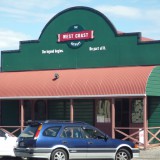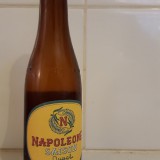In the wake of the Australian International Beer Awards, and the World Beer Cup, I’ve been thinking a lot about style and awards/medals.
I was prompted to make this post after drinking a “NZ Pale Ale” that the brewery was proud to receive a medal for at the AIBAs. It was amber in colour with sweet caramel malt flavours and a muted touch of yeast esters, marmalade and lemon on the aroma. The colour, muted hops and caramel flavours are not at all what I come to expect from something labeled as a NZ Pale Ale. And at odds with most New-World Pale categories in competitions; where a NZ Pale Ale typically falls.
So how did this win a medal? It was entered as an ESB of course.
It’s a bit of an open industry secret that entering your beer into a category different to your label is ok if it’ll give you a better chance of winning. This leads to some breweries picking up medals different to how they market their beer. A glance at AIBA results from any year will show you how many beers are marketed at odds with how they are entered. IPAs entered as Pales, Amber Ales medalling in Brown Ales, and Dark Ales medalling in Amber Ales.
I’m not sure who is at fault here, if anyone is. It’s a culmination of style interpretations, marketing, and competitions needing rigid criteria for their classifications. And I don’t expect any brewers to rigidly brew for style. That would lead to a world of boring beers.
Also, in the case of this beer, an ESB can be said to be a style of Pale Ale – and it uses NZ hops. So yeah, technically it’s an ale that’s pale from NZ. There are also many overlaps between ESB and New World Style Pale Ale at the AIBA. The main difference being New World Style Pale Ale emphasises low caramel malts, and a lighter body; while ESB looks for a sweeter and fuller body.
And admittedly the beer itself was a really nice take on an ESB… if I was to think of it as one.
But what of the consumer who buys something and gets something else? A quick look at the Consumer Affairs Victoria website (which is relevant to my current location) tells us:
While that may seem like I’m being a bit dramatic. Where is that line? For a beer drinker looking for a NZ Pale Ale and getting a beer that the brewing industry (in the form of competitions and judges, along with the brewers of the beer themselves) don’t consider to be a New World-Style Pale Ale, then doesn’t it prove that it is significantly different?
Back in reality, wouldn’t it also be nice if the brewery called it a NZ Special Bitter? People buy a lot of Pale Ales but not a lot of ESBs. “NZSB” might be a great way to help improve consumer knowledge.
Unfortunately whether the problem lies with the marketing, brewers, or competitions, or just me being a pedant; it feels like new drinkers wanting to explore different styles could easily be duped by the presence of a medal.



